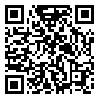1. Abbasi, B., Gholipour, A., Delavare, A., & Jafari, P. (2009). Qualitative research on the effect of commercialization approach on traditional university values. Journal of Science & Technology Policy, 2(2), 63-76. (Persian)
2. Abouei Ardakan, M., Labafi, S., Azarpour, S., & Jalalpur, M. (2014). Identifying the critical factors of strategic thinking success in the viewpoint of managers of cultural organizations of Isfahan. Executive Management Research Journal, 6(11), 13-34. (Persian)
3. Ahmadi, T. (2010). Environmental advertising engineering. Tehran: Farazandish Sabz. (Persian)
4. Bashiru, S., & Bunyaminu, A. (2013). A critical analysis on advertising banks products and services in Ghana. International Journal of Marketing Studies, 5(3), 117. [
DOI:10.5539/ijms.v5n3p117]
5. Bonyanian, H. (1998). A model on the pathology of the Islamic Revolution, pathology of the Islamic Revolution. Tehran: Representation of Supreme Leader in Sharif University of Technology. (Persian)
6. Braun, V., & Clarke, V. (2006). Using thematic analysis in psychology. Qualitative research in psychology, 3(2), 77-101. [
DOI:10.1191/1478088706qp063oa]
7. Chan, K., & Cheng, B. (2012). Awareness of outdoor advertising in Hong Kong. International Journal of Consumer Research, 1(1), 81-97.
8. Chervin, N. (2011). Environmental advertising in the context of the theory (M. Jafari, Trans.) Journal of City, Life, Beauty, Promotion of Environmental Advertising. (Persian)
9. Defleur, M., & Dennis, E. (2013). Understanding mass communication (S. Moradi, Trans.). Tehran: Faculty of Broadcasting Publishing. (Persian)
10. Fourie, P. (2008). Media studies: Media history, media and society (2nd ed. Vol. 1). South Africa: Juta Academic.
11. Ghafouri, S., & Asghari, A. (2012). Advertising urban morphology in Tehran. Tehran: Dibaei. (Persian)
12. Ghalenoi, M., Bahramian, A., & Madani, F. (2011). The role of shop floorboards in changing the urban landscape (case study: Charbagh Abbasi street). Comparative Studies of Art, 1(2), 29-39. (Persian)
13. Gidens, A. (2017). Ociology (M. Sabouri, Trans.). Tehran: Ney Publishing. (Persian)
14. Gray, P. S., Williamson, J. B., Karp, D. A., & Dalphin, J. R. (2007). The research imagination: An introduction to qualitive and quantitative methods (First Ed.). Cambridge, UK: Cambridge University Press. [
DOI:10.1017/CBO9780511819391]
15. Hasanrezaei, H. (2016). The broken window theory, and revising some tales and proverbs in farsi literature, cultural community studies. Research Institute of Humanities and Cultural Studies, 7(4), 79-93. (Persian)
16. Heidari, O., Zebardast, L., & Asgari Rad, F. (2017). Study and evaluation of environmental promotion in urban spaces (case study: Interventions of the Islamic Revolution Square to the Valiasr Square of Tehran). Journal of Environmental Science and Technology, Online Publication of History May 27th, (Persian)
17. Hesse-Biber, N., & Leavy, P. (2003). Approaches to qualitative research. New York: Oxford University Press.
18. Kelling, G., & Wilson, J. (2003). Broken windows: The police and neighborhood safety. The Judiciary Law Journal, 43, 179-204. (Persian)
19. Kim, S., & Jun, J. (2016). The impact of event advertising on attitudes and visit intentions. Journal of Hospitality and Tourism Management, 29, 1-8. [
DOI:10.1016/j.jhtm.2016.04.002]
20. King, N., & Horrocks, C. (2010). Interviews in qualitative research. London: Sage.
21. Kvale, S. (1996). Interviews views: An introduction to quantitative research interviewing. Thousand Oaks, CA: Sage.
22. Mahdizadeh, S. (2012). Media theories: Common thoughts and critical views. Tehran: Hamshahri. (Persian)
23. Majidi Ghahroodi, N., & Abbasi, F. (2012). The role of environmental advertising (inbound buses advertising) on persuading the audience to buy goods in the 14 district of Tehran. Culture of Communication, 2(6), 127-149. (Persian)
24. Mcquail, D. (2010). Mcquail's mass communication theory. London: Sage publications.
25. Mohammadian, M., & Pourhosseini, A. (2012). Environmental advertising; Abandoned advertising capacity in Iran. Tehran: Mehraban Publishing. (Persian)
26. Mohammadpour, A. (2013). Qualitative research method, anti-method 2: Levels and practical procedures in qualitative methodology. Tehran: Sociologists. (Persian)
27. Mokhtari Naseri, L., Hassanpour, M., & Khatayi, S. (2015). The effect of environmental advertising on society culture. Paper presented at the The First National Conference on Environmental Advertising in Iran, Tehran, University of Science and Culture. (Persian)
28. Moradi, M. (2014). Paradigm shift from quantitative research to qualitative research in humanities. Journal of Research, 24(57), 93-116. [DOI:10.22034/Rahyaft.2014.24.57.537557]. (Persian)
29. Nazeri, A., Sobhanifard, Y., & Ettehad mohkam, S. (2016). Evaluation of effectiveness factors on use of commercial billboard design by Isfahan advertising company. A Bi-Quarterly Journal of Pazhuhesh-e Honar, 6(11), 87-98. (Persian)
30. Payandeh, H. (2006). A critical reading of commercial ads on Iran's television. Tehran: Roznegar. (Persian)
31. Postman, N. (2015). Life in sash, dying in happiness (S. Tabatabai, Trans.). Tehran: Newspaper Etelaat. (Persian)
32. Poulos, N. S., & Pasch, K. E. (2015). The Outdoor MEDIA DOT: The development and inter-rater reliability of a tool designed to measure food and beverage outlets and outdoor advertising. Health & place, 34, 135-142. [
DOI:10.1016/j.healthplace.2015.05.007]
33. Ritzer, G. (2015). Theories of sociology in contemporary (M. Solathi, Trans.). Tehran: Elmi Publishing. (Persian)
34. Sajjadi, E. (2011). Advertising management. Tehran: Ramand Publishing. (Persian)
35. Salehi Amiri, S. (2016). Concepts and Cultural Theories. Tehran: Ghoghnos Publishing. (Persian)
36. Seidman, I. (2006). Interviewing as qualitative research: A guide for researchers in education and the social sciences. New York, USA: Teachers College Press.
37. Terkan, R. (2014). Importance of creative advertising and marketing according to university students' perspective. International Review of Management and Marketing, 4(3), 239-246.
Valkenburg, P. M. (2000). Media and youth consumerism. Journal of Adolescent Health, 27(2, Supplement 1), 52-56. [
DOI:10.1016/S1054-139X(00)00132-4]








